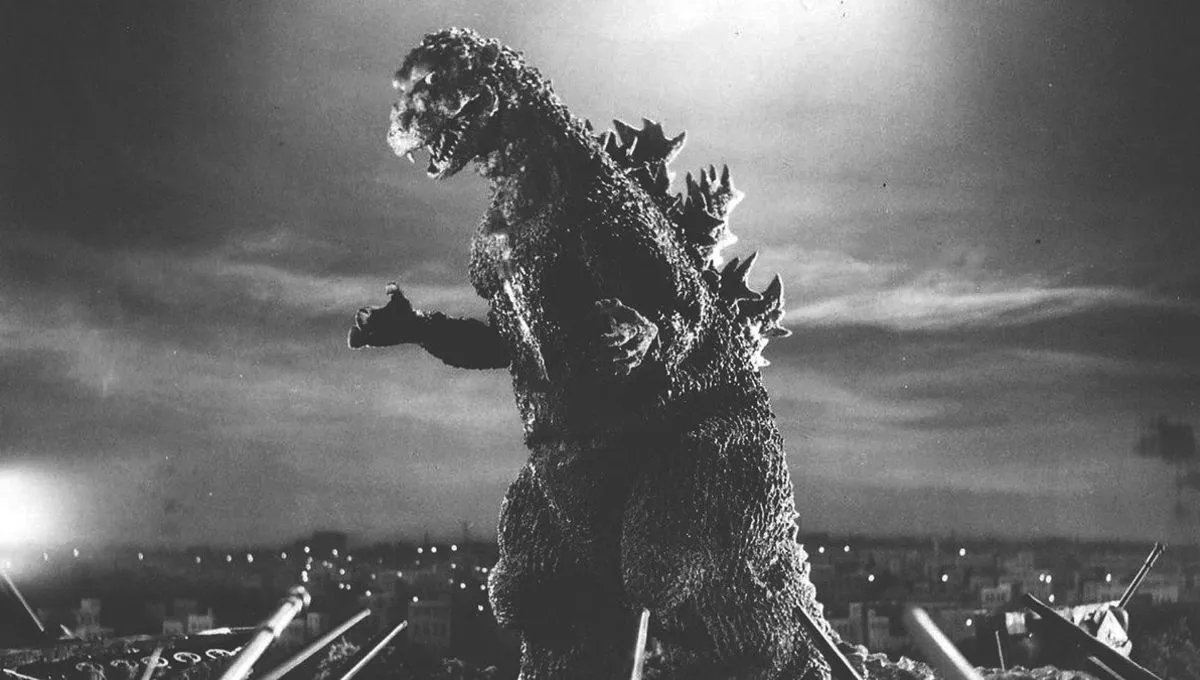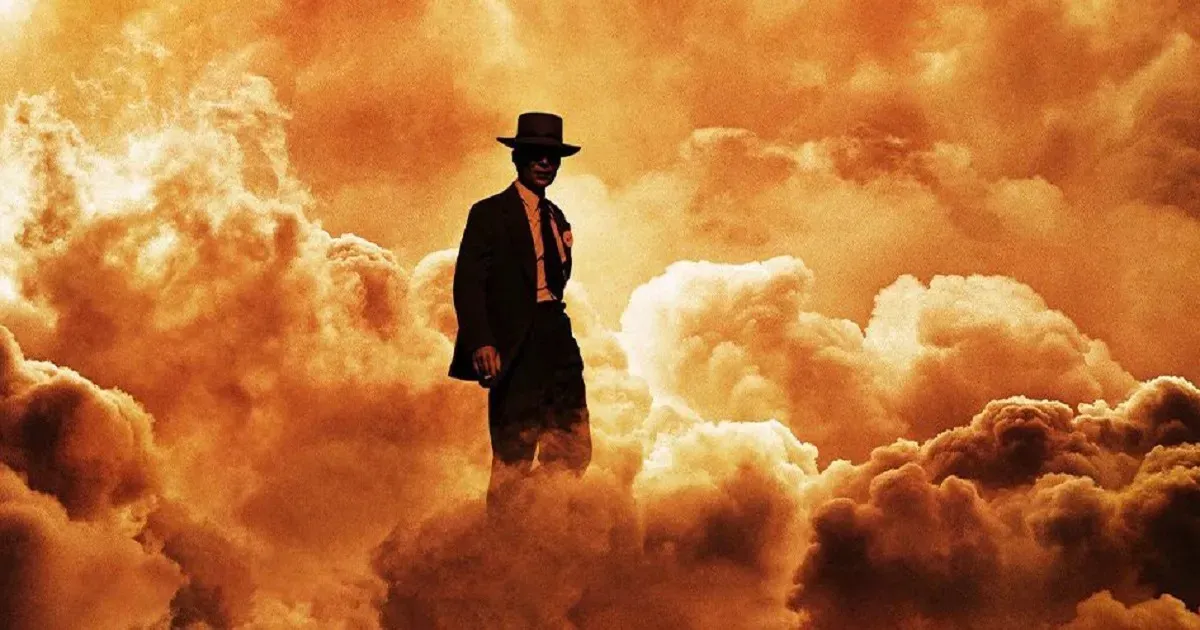On August 6, 1945, the United States dropped an atomic bomb on Hiroshima. Three days later, the US dropped a second bomb on Nagasaki. Since then, the bombs have been subject to prolific controversy, misinformation, and analysis. The impact of the atomic bombs on both history and media cannot be overstated. Here, The Mary Sue’s Madeline Carpou and Kimberly Terasaki re-examine the history of the bombs in the context of politics and pop culture.
The History of the Atomic Bomb
by Madeline Carpou
If you were raised in the United States, you were likely given a very terse explanation for the dropping of the bombs on Hiroshima and Nagasaki. It’s a point of both pride and discomfort for Americans to discuss, to the point where many history classrooms practiced debate by using this very subject. Was dropping the bomb justified? Did the war crimes committed by the Japanese military “balance out” the number of civilian lives lost in the bombings? Must we also take into account the internment of Japanese families in the United States? These are all big questions that are often answered very callously and without much deliberation.
Much of this is because the history behind the atomic bombs is not expanded upon quite as much as it should be, which, as a history major, makes sense to me: American patriotism rose to astounding heights following their success in World War II, meaning that a comprehensive understanding of this period of history would feel counterintuitive to many. Yet that history is crucial to understanding the true severity and context behind the bombs.
It’s perhaps most important to consider the Japanese government at the time, and the negotiations that took place right before the bombs dropped. Japan was in the later years of the Showa Era, attempting to rapidly modernize in order to meet the Western world head-on. Its Meiji Constitution had split the government into two branches: the Monarchy, headed by Emperor Hirohito, and the Cabinet, headed by an elected Prime Minister. The Emperor was the head of state, while the PM handled what were essentially the most “major” decisions—including those pertaining to wartime.
Eventually, there were talks of peace and potentially surrender within the government, which began to see the Japanese involvement in the war as a losing bet. The American military was aware of these talks, as well as the fact that Hirohito himself was beginning to sway; a few overseas dignitaries even came back home just to urge the government to give it a bit more time.
The one attempt to acknowledge these internal conflicts, and perhaps use them to push Japan toward complete surrender, was the Potsdam Declaration: terms drafted by Allied leaders, which stated that Japan must concede its military operations, including territorial occupations, while implying that the Emperor would maintain power over the dissolved Cabinet. Japan, however, declined these terms.
The US subsequently dropped an atomic bomb on Hiroshima. The wartime council maintained that it wanted to see what the Soviets would do, and was unwilling to accept complete surrender, but by the time the bomb was dropped on Nagasaki, Hirohito was desperate to end the war. The Soviet Union did ultimately declare war during this time period, heightening Hirohito’s urgency even more. So, he stole away from the council, fled an attempted coup (the Kyujo Incident), and went on to record a speech declaring Japan’s surrender. You can read the whole speech here.
I believe it’s important to know and understand the history on the other side of this. Without understanding the full context, it can be easy to write off the bomb in any number of ways. The real truth of the matter is that the Japanese government was already in turmoil, and most civilians were as desperate as the emperor to see the war end—so much so that the nation’s surrender culminated in Golden Week, a holiday that celebrates peace and the establishment of a new constitution.
This will continue to be a multifaceted period of history that is impossible to define in absolutes. Both the American and Japanese governments were embroiled in internal conflicts that resulted in drastic measures on either side. All we can do is try to understand the fuller contexts on both sides in an attempt to prevent further harmful narratives from being spread in the future.
The Atomic Bomb in Pop Culture
by Kimberly Terasaki

From the moment the bomb was dropped, Hollywood recognized its power, not just from a physical standpoint, but the mental, emotional, and psychological aspects as well. In the decades since the US dropped two atomic bombs on Japan, there have been many movies about the bombs from both a literal and metaphorical perspective.
Some films, like Oppenheimer, explore the history of the bomb and the people who created it or dropped it. Heck, the first American film about the bomb was the 1947 docudrama The Beginning or the End, released while people were still dying from the fallout. However, because they are American films, they prioritize the American perspective or the cost to the American psyche, with the actual victims of the bombings frequently being little more than an afterthought.
Even films that don’t seem to have much of an apparent connection to the bombing can find themselves connected to the history of this one event. The first blockbuster, Jaws, has an iconic scene in which Captain Quint regales his shipmates with the horrifying tale of the Indianapolis, the ship that carried materials for one of the bombs and was kept so secret that they sent out no distress call when the ship sank, resulting in only 316 of the 1,195 crew members surviving.
Other films, including many major franchises, have opted to use metaphors to illustrate the dangers of nuclear power and man’s perceived “control” of it.
Perhaps the most well-known metaphor for the threat of nuclear annihilation is Godzilla, whose first act is killing Japanese fishermen in a manner similar to the Lucky Dragon 5 incident, where the fallout of Bikini Atoll poisoned 23 men. Godzilla highlights the dangers of atomic experimentation and attempting to control powers beyond human comprehension. However, that metaphor becomes murky, especially in films where the audience actively roots for Godzilla, like in the more recent Warner Bros. films.
Many writers have also seen radiation as a force for good in the world. Numerous superheroes have some form of radiation figure into their backstory (a radioactive spider, for example). At the same time, the superheroes themselves rarely suffer long-term effects from their exposure or if they do, the effects are usually manageable or eventually retconned.
The one exception is arguably Doctor Manhattan of Watchmen, who is given godlike abilities but also loses much of his own will and human perspective now that he comprehends all of time and space. To Manhattan, nuclear annihilation would make him feel just as alone as he does when surrounded by people.
Fictional weapons of mass destruction are also frequent metaphors for the bomb.
The Death Star (and its many planet-destroying knockoffs) is probably the clearest equivalent to the atomic bomb in Star Wars, with the Imperial military seeing the station as the permanent end to the rebellion and a power greater than the Force itself. This quickly turns into an arms race with the Empire/First Order taking any and every chance to build more planet-destroying weapons.
Marvel’s Tesseract is also a close metaphor, with it being used to make weapons for HYDRA and the climax of Captain America: The First Avenger centering around Cap preventing the Allied powers from being attacked with Tesseract-powered bombs. When S.H.I.E.L.D. eventually uses the Tesseract to make weapons, Tony Stark literally calls it a nuclear deterrent. Eventually, the Avengers make the call to have Thor take the Tesseract back to Asgard, where it would be beyond human exploitation.
Many movies, shows, and games also explore what might happen to humanity if we ever do get into nuclear war, or the potential aftermath of one (assuming there’s an after at all). Mad Max and the Fallout franchise are famous post-apocalyptic narratives, with both series satirizing the glorification of war and the past, while also recognizing the real costs of nuclear fallout, such as mutations and sterilization.
In almost all media, the atomic bomb or its metaphorical equivalent inspires two reactions: fear and awe. The two are not mutually exclusive and often coincide.
However, there is a negative side to this; much like how some people argue that there has never truly been an anti-war movie, Hollywood struggles to create a film that is truly anti-Atomic bomb. Godzilla is now a hero whose destruction is seen as a necessary risk. Star Wars has given in to the spectacle and focuses on creating even bigger and flashier versions of the original Death Star. Even Oppenheimer delights in the thrill of success during the Trinity test, with viewers reveling in the practical explosion effects.
You probably can’t even remember the first time you saw a mushroom cloud; nowadays, it is a piece of visual shorthand used to illustrate the power of an explosion, whether it’s for comedic or sincere effect.
On the whole, Japanese films do a better job at confronting the horror of the bombs and their impact, which continues to this day. Still, I think it says a lot that even 78 years after the dropping of the atomic bombs, we still can’t really confront what we did without putting a positive spin on it or making it about ourselves.
(featured image: Universal Pictures)











Published: Aug 12, 2023 12:39 pm